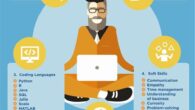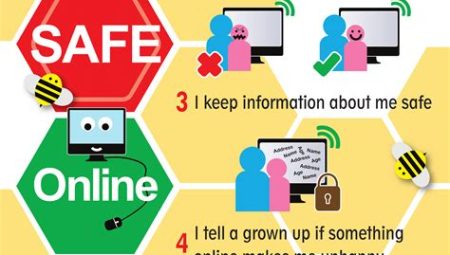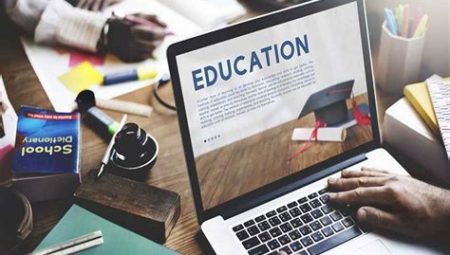In today’s fast-paced and ever-evolving educational landscape, the integration of educational technologies has become a powerful force in transforming the way we approach teaching and learning. From personalized learning to virtual reality and mobile learning, the possibilities for enhancing the educational experience are endless. In this blog post, we will explore the diverse ways in which educational technologies are revolutionizing the field of education. From fostering creativity and collaboration with digital tools to connecting students globally through online learning platforms, we will delve into the various ways in which these technologies are reshaping the learning experience for both students and educators. Join us as we uncover the immense potential of educational technologies in enhancing student engagement, tailoring education, and revolutionizing classroom instruction. Get ready to be inspired by the transformative power of educational technologies unleashed.
Table of Contents
Enhancing Student Engagement through Educational Technologies
The use of educational technologies has significantly transformed the way students engage and interact with learning materials. With the integration of technology in the classroom, educators are now able to create more interactive and engaging learning experiences for their students. This not only enhances student engagement but also improves their understanding and retention of the material.
One of the most effective ways educational technologies enhance student engagement is by personalizing the learning experience. Through adaptive learning platforms and personalized content recommendations, students are able to learn at their own pace and focus on areas that they find challenging. This level of personalization creates a more engaging learning environment, as students feel more in control of their own learning.
Moreover, interactive technologies such as virtual reality and gamified learning applications have proven to be highly effective in keeping students engaged. By immersing students in a virtual environment or by turning learning into a game, these technologies make learning more enjoyable and interactive, leading to higher levels of engagement and participation.
Overall, the integration of educational technologies in classrooms has revolutionized the way students engage with learning materials. By personalizing the learning experience, creating interactive environments, and providing real-time feedback, technology has become an indispensable tool for enhancing student engagement in the modern classroom.
Personalized Learning: Tailoring Education with Technology
Personalized learning is an innovative approach to education that uses technology to tailor learning experiences to each student’s individual needs, interests, and abilities. This method of instruction allows students to progress at their own pace, focus on areas where they need extra help, and explore topics that pique their curiosity. By leveraging educational technologies such as adaptive learning software, online resources, and digital content, educators can create a more customized and effective learning experience for every student.
One of the key benefits of personalized learning is that it empowers students to take ownership of their education. With the help of technology, students can set their own learning goals, track their progress, and receive instant feedback on their work. This level of autonomy not only fosters a sense of responsibility and self-efficacy, but also helps students develop important skills such as time management, organization, and resourcefulness.
Furthermore, personalized learning enables educators to better identify and address the diverse learning needs of their students. By harnessing the power of data analytics and assessment tools, teachers can gain valuable insights into each student’s strengths, weaknesses, and learning styles. Armed with this information, educators can create personalized learning plans, provide targeted support, and offer differentiated instruction to meet the unique needs of every learner.
In conclusion, personalized learning, powered by educational technologies, has the potential to revolutionize the way we educate students. By tailoring education to the individual needs and preferences of each student, we can create a more engaging, effective, and inclusive learning environment that sets students up for success in the digital age.
Revolutionizing Classroom Instruction with Interactive Technologies
Interactive technologies have completely changed the way classroom instruction is delivered, offering a dynamic and engaging learning environment for students. These technologies include smart boards, clicker systems, and interactive whiteboards, which provide opportunities for active participation and collaboration among students.
By incorporating interactive technologies into the classroom, educators can create more personalized learning experiences that cater to different learning styles and abilities. Rather than relying solely on traditional lectures and textbooks, these technologies allow for hands-on activities and real-time feedback, making the learning process more effective and enjoyable for students.
Furthermore, interactive technologies have revolutionized classroom instruction by enabling teachers to customize lessons and incorporate multimedia elements such as videos, animations, and simulations. This not only enhances the delivery of content but also fosters critical thinking and problem-solving skills among students.
In conclusion, the integration of interactive technologies has transformed classroom instruction, making it more engaging, interactive, and effective in meeting the diverse needs of 21st-century learners.
Expanding Learning Horizons with Virtual Reality in Education
Virtual Reality (VR) has been making waves in the education sector, offering an innovative approach to learning. By immersing students in realistic and interactive simulations, VR expands learning horizons by providing a unique and engaging educational experience.
One of the key benefits of VR in education is its ability to transport students to different locations and time periods, allowing them to explore historical sites, experience life in different cultures, and even journey through outer space without leaving the classroom. This level of immersion can enhance students’ understanding of complex concepts and spark their curiosity in ways that traditional teaching methods may not achieve.
Moreover, VR can cater to various learning styles, making education more personalized. Whether visual, auditory, or kinesthetic, students can engage with content in a way that best suits their individual needs, fostering a deeper understanding and retention of information.
Expanding learning horizons with VR in education also means preparing students for the future. As technology continues to advance, equipping students with digital literacy and adaptability is crucial. VR not only exposes students to cutting-edge technology but also teaches them valuable skills such as problem-solving, critical thinking, and collaboration – all of which are essential in the 21st-century workforce.
Fostering Creativity and Collaboration with Digital Tools
Technology has become an integral part of modern education, and it has the power to transform the way students learn and collaborate. With the rise of digital tools, educators now have the opportunity to foster creativity and collaboration in the classroom like never before. By embracing these tools, teachers can provide students with the means to express their ideas in new and innovative ways.
One of the key benefits of using digital tools in the classroom is the ability to personalize learning experiences for each student. With access to a wide range of resources and platforms, educators can tailor their approach to meet the unique needs of every student, empowering them to explore their interests and develop their creativity.
Additionally, digital tools can facilitate collaboration among students, as they can easily connect and work together on projects across different locations. These tools also provide a platform for sharing ideas and feedback, fostering a sense of collaboration and community among students.
Furthermore, digital tools can enable students to explore and engage with a variety of multimedia resources, such as videos, interactive simulations, and virtual reality experiences. This diversified learning approach can help spark students’ creativity and encourage them to think outside the box.
Empowering Teachers with Learning Management Systems
Learning Management Systems (LMS) have become an essential tool for educators in today’s digital age. These platforms provide teachers with the ability to organize, deliver, and track educational content, as well as communicate with their students in a seamless manner. By incorporating LMS into their teaching practices, educators can streamline their administrative tasks, such as grading, attendance, and lesson planning, allowing them to focus more on the actual teaching and learning process.
Furthermore, LMS offer a variety of features that cater to different learning styles and pace, enabling teachers to create personalized learning experiences for their students. Through the use of interactive resources, multimedia content, and discussion forums, educators can engage students in a more dynamic and interactive manner, fostering a collaborative and engaging classroom environment.
Another key benefit of LMS for teachers is the access to data analytics and reporting tools that allow them to track student progress and identify areas for improvement. This valuable insight enables educators to tailor their instructional strategies, provide timely feedback, and offer additional support to students who may be struggling with certain concepts, ultimately leading to improved educational outcomes.
In addition, LMS offer the convenience of flexible and mobile learning, allowing teachers to deliver content and communicate with their students anytime, anywhere. This flexibility not only empowers educators to adapt to the needs of today’s digitally savvy students but also enables them to connect globally with other educators and share best practices, resources, and ideas.
Utilizing Data Analytics to Improve Educational Outcomes
In today’s digital age, data analytics has become a powerful tool in improving educational outcomes. By harnessing the power of data, educators and administrators can gain valuable insights into student performance, engagement, and learning patterns. This personalized learning approach allows for tailored interventions and support for each student, ultimately leading to improved academic achievement.
With the help of learning management systems and online platforms, educators can collect and analyze a wealth of data, including assessment results, attendance records, and even student behavior. This data can then be used to identify struggling students, assess the effectiveness of teaching strategies, and make informed decisions to enhance the overall student engagement and performance.
Furthermore, by utilizing data analytics, educational institutions can track long-term trends, identify areas for improvement, and measure the impact of various initiatives. This data-driven approach allows for evidence-based decision-making, leading to more efficient resource allocation, targeted interventions, and ultimately, improved educational outcomes for all students.
As we continue to navigate the rapidly evolving landscape of education, the use of data analytics will play an increasingly crucial role in ensuring that every student receives the tailored support and resources they need to succeed. By leveraging the power of data, educators can truly revolutionize classroom instruction and expand learning horizons, ultimately preparing learners for the future with emerging technologies.
Connecting Students Globally through Online Learning Platforms
Technology has revolutionized the way students learn and interact with their peers across the world. Online learning platforms have made it possible for students from different corners of the globe to connect and collaborate on various educational projects.
These platforms offer a diverse range of tools and resources that enable students to communicate, share ideas, and work together on assignments. The flexibility and accessibility of online learning platforms make it easier for students to engage with their peers from different cultures and backgrounds.
By allowing students to collaborate with their peers globally, these platforms foster cultural exchanges and help students develop a global perspective on various issues and topics. It also promotes cross-cultural understanding which is a valuable skill in today’s interconnected world.
Overall, online learning platforms play a crucial role in connecting students globally and preparing them for the interconnected future that awaits them.
Harnessing the Power of Mobile Learning
Mobile learning has become an integral part of the education system, revolutionizing the way students access and engage with educational materials. With the rapid advancement of technology, mobile learning has gained popularity as a convenient and flexible way to learn. Whether it’s through educational apps, online courses, or interactive games, mobile learning provides students with the opportunity to learn anytime, anywhere.
One of the key advantages of mobile learning is its accessibility. Students no longer have to rely on traditional classroom settings or physical textbooks to gain knowledge. Through mobile devices such as smartphones and tablets, learners can access a wide range of educational resources at their fingertips. This flexibility allows students to tailor their learning experience to suit their individual needs and preferences, ultimately enhancing their overall learning outcomes.
Moreover, mobile learning encourages personalized learning by providing students with the freedom to learn at their own pace and in their own space. This self-directed approach fosters a sense of independence and autonomy in learners, helping them to take control of their own educational journey. Additionally, mobile learning can cater to diverse learning styles and preferences, ensuring that each student receives a customized learning experience that meets their specific needs.
Furthermore, the utilization of mobile learning enhances student engagement by incorporating interactive and multimedia elements into the learning process. Through the use of videos, simulations, and interactive quizzes, students can actively participate in their learning, making the educational experience more dynamic and immersive. This interactive approach not only captures students’ attention but also promotes active learning, critical thinking, and problem-solving skills.
Preparing Learners for the Future with Emerging Technologies
With the rapid advancements in technology, it has become crucial for educators to prepare learners for the future by integrating emerging technologies into the classroom. By doing so, students will be equipped with the necessary skills and knowledge to thrive in a rapidly changing world.
One way to prepare learners for the future is through personalized learning platforms that cater to the individual needs and learning styles of each student. With the help of educational technologies, teachers can tailor their instruction to meet the unique needs of every learner, ensuring that no student is left behind.
Furthermore, the use of data analytics in education can provide valuable insights into student performance, allowing educators to identify areas for improvement and provide targeted support. This proactive approach to addressing student needs can help ensure that learners are well-prepared for the challenges of the future.
Additionally, emerging technologies such as virtual reality and mobile learning can help expand learning horizons by providing immersive and interactive experiences that engage and inspire students. By leveraging these technologies, educators can foster creativity, collaboration, and critical thinking skills that are essential for success in the 21st century.





